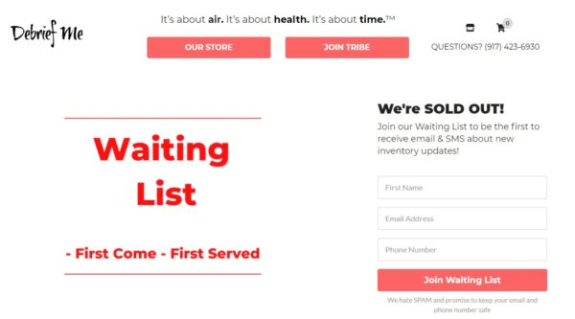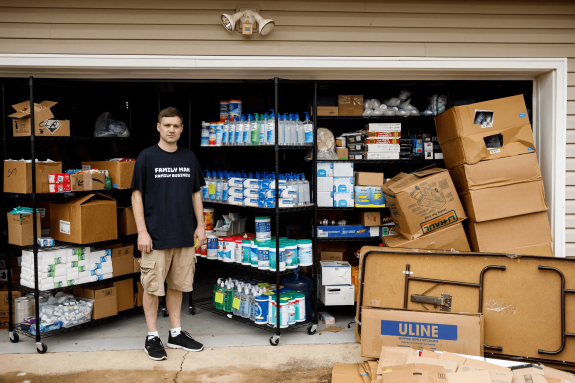The Hidden Impact of Coronavirus on Ecommerce Success

The pandemic didn’t just accelerate ecommerce—it reshaped it in ways many didn’t expect. From rapid digital transformation to logistical nightmares, the industry is still feeling the aftershocks of COVID-19. As Covid-19 (Coronavirus) continues to spread around the globe, leaving an ever-growing list of national lockdowns in its wake, footfall traffic to brick-and-mortar stores is being decimated as a result.
But what about eCommerce?
The general assumption is that self-quarantine and the closures of offices, restaurants, and bars will trigger a massive increase in online sales, but the reality might not be quite as rosy.
Key takeaways
- Mixed Impact on eCommerce – While online sales surged for essentials and groceries, other industries, like electronics, faced declining demand.
- Supply Chain Disruptions – Many businesses struggled with manufacturing delays and price gouging, especially those relying on Chinese suppliers.
- Adapting to Challenges – Companies should rethink supply chains, explore local sourcing, and shift marketing efforts online.
- Long-Term Survival Strategies – Businesses must plan for future disruptions by diversifying sales channels, maintaining marketing, and building financial resilience.
On this page:
The short-term impact of the Coronavirus on online sales
So far, the effect of coronavirus on online sales has been mixed and split mainly along product lines. On JD.com, China’s largest online retailer, sales of household staples quadrupled, and sales of fresh food more than doubled in early February compared with the previous year.
Grocery pick-up and delivery will have a short-term boost, according to Andrew Lipsman, principal analyst at eMarketer, with sales of books and streamed video content making up for unprecedented declines in the restaurant and entertainment industries.
But other industries are feeling the squeeze. Smartphone sales in China, for example, fell 56% in February, following a 38.9% drop the previous month, and a 14.7% decline the month before that.
Supply chain shortages pose a huge threat
While online shopping may well benefit in the short term, supply chain issues and uncertain consumer demand will likely offset (or reverse) any eCommerce growth.
Businesses are already struggling to maintain their manufacturing operations, especially those that source their products from China.
Debrief Me is a case in point. The company which makes “designer” face masks saw sales grow ten times since the coronavirus threat went public. But customers who try to order from the company’s website today will be met with a big, red “SOLD OUT” and a first-come, first-served waiting list. Why? Because the company can’t get workers back into their Chinese factories so supply is barely trickling in, and air-freighting stock over can be prohibitively expensive.

Other retailers are reporting price gouging by Chinese factories. Katie Tierney of Amerex Group, a company that manufactures clothing for brands like Vince Camuto, Kate Spade, and Dolce Vita, has also witnessed factories prioritizing big-money orders, leaving smaller businesses in the lurch.
“Many just don’t have the resources to compete with a larger company that’s placing an order for 10,000 units versus their 500 units of product and they’re willing to pay a premium for those goods whereas many smaller companies may not be able to do the same.”
What can be done to offset delays in the supply chain?
Many companies that rely heavily on China (including Debrief Me) are trying to restructure their supply chains by securing manufacturers in the United States. The result will be higher costs, but when the only alternative is going out of stock for months, it’s worth it.
Companies have to be creative. In the garment industry, some labels are experimenting with print-on-demand over bulk manufacturing. They’re also cutting discounts and focussing on higher-margin and higher-value items in an attempt to keep hold of inventory longer.
Food-based consumer goods manufacturers are concentrating their efforts on local suppliers rather than shipping from abroad.
What else can businesses do to weather the Coronavirus storm?
Here at Core dna, we’re carrying out all our client meetings on Zoom rather than in-person. And, we’re encouraging members of our team who don’t feel comfortable taking public transport to work from home.
After all, coronavirus is affecting people on an emotional, as well as on a physical level, and our primary concern is the wellbeing of all our employees and customers.
Core dna employees that are working from home are using Slack for internal command Core Teams (our internal project management tool) for updating projects.


And, everyone is remaining contactable during working hours. Our main message is that we need to over-communicate: be open, emotionally available, and empathetic to everyone’s needs. Let’s stay positive.
In the outside world, you’ll find plenty of examples of companies doing coronavirus right. Microsoft, for example, has committed to continue paying all hourly workers serving its campus, regardless of whether they still require their services.
Google has made Hangouts Meet available to all Google Suite account holders. And Mark Cuban Companies is reimbursing all lunch and coffee purchases from local, independent small businesses.

How to survive and thrive
Jack Welch famously said, “Never miss out on an opportunity like a good recession.” We say, you can survive and thrive in pandemic pandamonium, just don’t be this guy.

1. Play for the long haul
There are short-term opportunities out there, but the businesses that will benefit most will be those that take a long-term, conservative view and manage to adapt to the “new normals” that will inevitably emerge from this current crisis.
2. Keep your marketing going
Businesses are going to have to reconsider marketing strategies and likely shift budgets from offline to online as customers spend more time at home on social media and less time out on the streets.
The Chinese company, Midea, is an excellent example of adapting to this new landscape - they’ve started pushing out live streams of celebrities teaching viewers how to cook at home while staying infection-free, as well as other coronavirus-based content.
3. Over-communicate, be human and have empathy to employees and customers
Overall, it’s critically important that brands remain sensitive to the public mood surrounding the crisis, and this has to be reflected in their marketing messages and customer service interactions. There are significant opportunities for companies that can capture a substantial share of the voice at a time when people are crying out for leadership.
4. Diversify your channels
Don't put all your eggs in one basket. For example, if you're exclusively selling your products on Amazon, you might want to branch out and start going direct to consumers. If you're a retail-only company, might want to start putting your products on Amazon or again, sell directly to consumers.
5. Plan for other scenarios
Sit together with your team and brainstorm what other possible scenarios could happen in the next 3, 6, or 9 months, and have an action plan for each scenario.
Have a chat with your partners, manufacturers, and your team on how you can band together to weather this storm.
Financially, see if you can get help from the government and start planning to have enough cash reserves to weather the storm for weeks or months, and plan to reduce operational costs as needed.
Further resources to help you:
- Direct-to-Consumer (D2C): 21 Ways to Get Started in 2020
- DTC Marketing: Lessons From Quill's $1 Billion DTC Strategy
- How to Choose The Right eCommerce Platform: The Ultimate Guide
- eCommerce Marketing Case Study: How a 100+ Year Old Brand Adapted to the Digital Age
- eCommerce Facebook Ads: How MVMT Grew From Zero to $90 Million in Under 5 Years With Facebook Ads
- How to Grow Your eCommerce Business Internationally
- How Frank Body Used Content Marketing to Make $20 Million in Sales
- 35 Fatal eCommerce Mistakes We See People Make (Yes, Even You!)
- 50+ Resources to Help You Nail Your Social Media Advertising
- Defining “Essential” Businesses Operations: A State-By-State Guide













